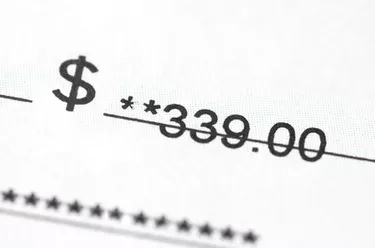
If you've ever written a check that seemed to get lost in the mail, then you've probably had to put a stop-payment order on the check. A stop-payment order allows you to cancel the check before it is cashed.
Placing a Stop-Payment Order
Video of the Day
The best way to place a stop-payment order on a check is to go directly to your bank. Make sure you have all the information you'll need regarding the check, including the number, date, the amount of the check and to whom it was written. There are forms you'll have to fill out for your bank. You can also issue a stop-payment order by phone. However, you should follow up your verbal request with a written one within 14 days or the original stop-payment request will become invalid.
Video of the Day
Be Mindful of Dates
Most banks will honor a check as long as it's presented within six months of the date it was written. Just to be safe, however, assume that your check is still viable even if it was written more than six months ago. Banks have been known to honor checks as much as 18 months later. You may renew the stop order after the first six months.
Fees and Charges
Although the process of placing a stop order on a check is simple, it can be expensive. Each bank has its own fees and they vary from region to region. As in the case of a bounced check, the bank is taking on a potential risk or liability for its customer in the event that the check is presented within the six-month time frame. The majority of banks charge $25 to $35, which falls in line with most bank overdraft penalties.